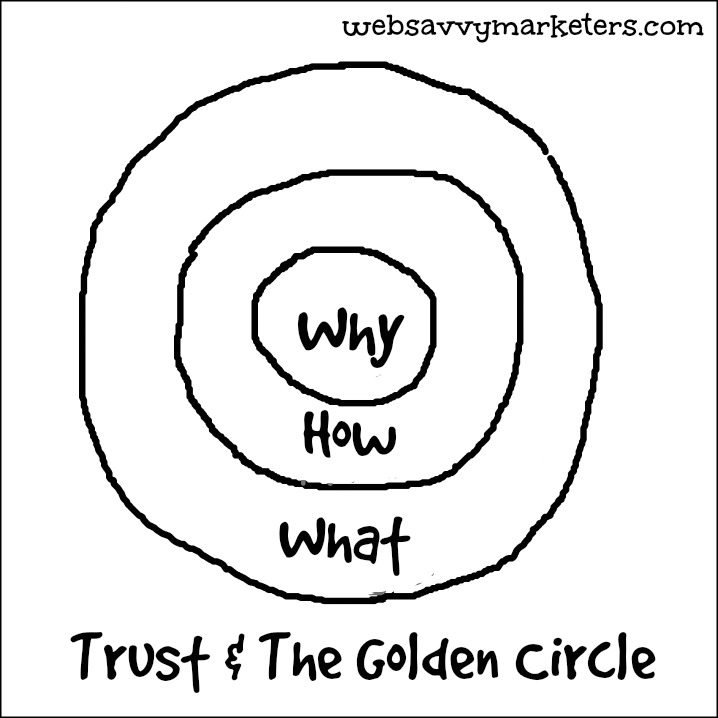 Trust is a hard-won commodity. Gaining your customer’s trust is a process that takes a business at least two years, according to a global study by SDL. Strengthening your relationships with your customers is an investment that requires good communication, but just how else do you build trust over time?
Trust is a hard-won commodity. Gaining your customer’s trust is a process that takes a business at least two years, according to a global study by SDL. Strengthening your relationships with your customers is an investment that requires good communication, but just how else do you build trust over time?
With these three secrets, help your business grow as you practice building trust.
-
Be Imperfect
Today’s social media makes your business far more visual and public. Your business communications on Facebook, Instagram, Pinterest, and other social media platforms reflect your ability to be accessible and transparent.
The key to conveying accessibility and authenticity to your audience is by sharing content that reveals you’re imperfect. Authentic storytelling involves a willingness to admit your faults and mistakes, as well as your accomplishments and successes. The more you engage with your followers in a familiar and realistic manner, the more effective you’ll be in persuading them to accept and trust you.
Gone is the perfect brand image with impeccable stock photos to tell your brand’s story. The trend in images on social media echoes the user-generated content taken by the smartphone in your back pocket. The natural technical errors and the added filters help create imagery that’s familiar and relatable.
There’s a right balance between professional, polished content and authentic storytelling that depends on your audience and business. Just remember, the more transparent and realistic you are, the more your audience will gravitate to you.
-
The Law of Diminishing Returns
The law of diminishing returns is the theory that the more you do something, the less value and effect it has. It applies to things you enjoy doing, like eating your favorite food or riding your favorite amusement park ride, and to performance-based efforts, like studying for an exam or practicing for a competition. The more you experience it or work at it, the more you grow tired of it or feel burned out from it.
This theory is similar to a diminishing law of credibility. The bigger your claims are, the less likely anyone will believe you. The rule here is to “never tell them more than you think they’ll believe.”
You might have the most powerful vacuum cleaner ever made, thanks to its high-tech filter. So how do you get your audience to believe you? Instead of rattling on about how and why it’s the best, start by telling the disadvantages first. Tell them the filter is the most expensive on the market. Then eventually get to that’s why it’s also the most effective.
This doesn’t mean you don’t get to sound excited about your product or service. It means you aren’t afraid to be upfront about some of the limitations in order to establish credibility and trust. This is a tool you probably use in your everyday life without realizing it.
For example, when talking to a friend about your exercise regime, you are more likely to tell another avid runner all about your struggle with 12-mile daily runs than you would discuss it with someone who never runs. You would be more effective in encouraging this friend by talking about the hard-won benefits of walking.
Telling people the truth, but only as much as they can accept and want to believe, will not only resonate with your audience, it will make you easier to trust.
-
Start With the Why of the Golden Circle
Why should people choose your product or service over your competitor’s? Is it better quality? Less expensive? Will it last longer? Most businesses sell themselves with similar claims, offering no unique point of reference.
According to Simon Sinek, the way to stand out from the competition is to use what he calls “The Golden Circle.” The circle consists of a bull’s-eye in the center of the circle and two concentric layers. In the center is the why, in the middle is the how, and in the outermost circle is the what.
To communicate with your customers, Sinek says to begin in the center with the why. He says that few organizations can explain the why to their existence, so to be unique and meaningful, you must start from the inside of the circle and work outwards. The why of your business is how you will build trust and loyalty, Sinek says.
Don’t let these three secrets stay a secret. Share this post with your colleagues and help to spread valuable trust in your corner of the world.